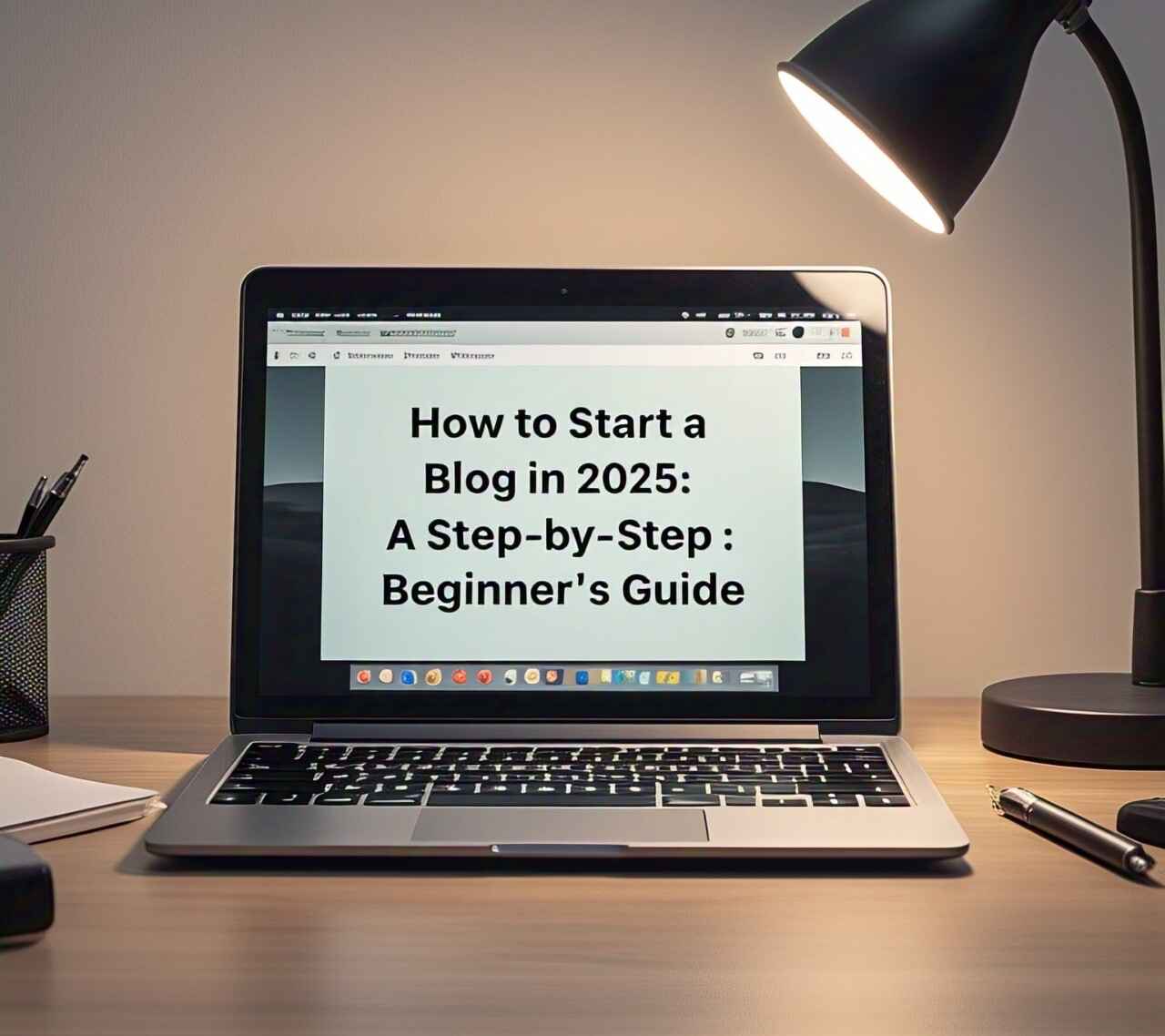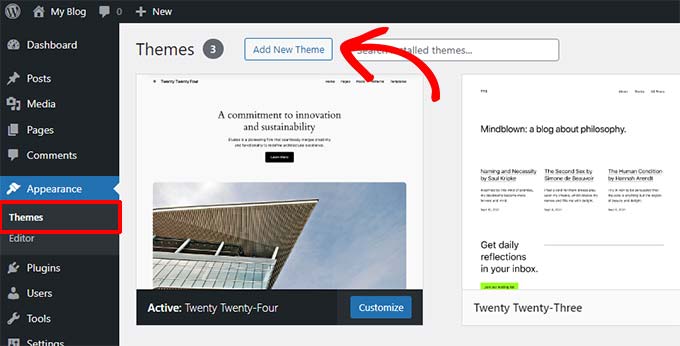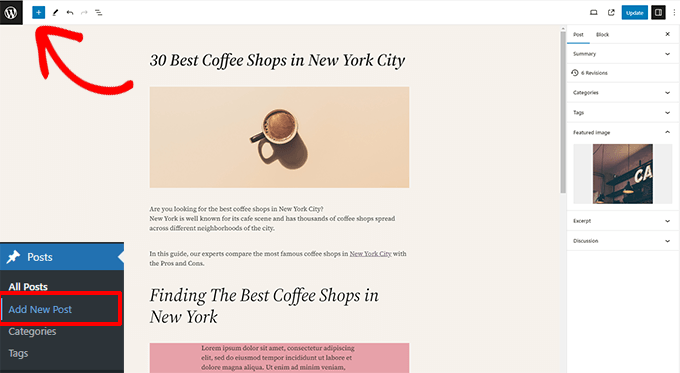
From my 8 years experience starting a blog can feel overwhelming, but this guide breaks it down into simple, actionable steps. Whether you want to share your passion, build a community, or earn income, we’ll walk you through everything, from choosing a niche to publishing your first post. Let’s begin!
💡 Having trouble starting your blog? Let SparkCreate Solutions turn your blogging vision into reality! Our team of skilled Website developers will craft a fully customized design for you, featuring a unique homepage, a polished logo, and seven pre-designed subpages – all at a budget-friendly rate. Get our Website Design Services now!
Table of Contents
- 1 Step 1: Choose a Blog Niche You Love
- 2 Step 2: Select a Blogging Platform
- 3 Step 3: Register a Domain Name and Hosting
- 4 Step 4: Designing Your Blog (for Beginners)
- 5 Step 5: Write Your First Blog Post
- 6 Step 6: Promote Your Blog
- 7 Step 7: Monetize Your Blog
- 8 Step 8: Track Your Progress and Improve Your SEO Performance
- 9 Final Tips for New Bloggers
Step 1: Choose a Blog Niche You Love
Your niche is your blog’s core topic. Picking the right one ensures you stay motivated and attract a dedicated audience.
How to Find Your Perfect Niche
- Start with Your Interests:
- List hobbies your, skills, or topics you’re passionate about (e.g., vegan cooking, personal finance, or tech gadgets).
- Ask yourself: Can I write 50+ posts about this?
- Validate Demand:
- Use Google Trends to check if the topic is growing.
- Explore forums like Reddit or Quora to see what questions people are asking.
- Example: Searches for “AI productivity tools” surged by 120% in 2024.
- Analyze your Competitors:
- Search for blogs in your niche. Note their strengths and gaps.
- Ask yourself: Can I offer a unique angle? (e.g., “Budget Travel for College Students” instead of generic travel tips).
- Check your Monetization Potential:
- Affiliate marketing, ads, and digital products work best in niches like:
- Health & Wellness: Supplements, fitness programs.
- Tech: Software reviews, gadget guides.
- Personal Finance: Investing, side hustles.
- Affiliate marketing, ads, and digital products work best in niches like:
Step 2: Select a Blogging Platform
Your Blogging platform is your blog’s foundation. Here’s a detailed comparison of the popular blogging platforms:
| Platform | Pros | Cons |
|---|---|---|
| WordPress.org | Full control, 50k+ plugins, SEO-friendly | Requires hosting |
| Squarespace | Stunning templates, no coding | Limited customization, higher cost ($16+/month) |
| Wix | Drag-and-drop ease | Not ideal for large-scale growth |
| Medium | Built-in audience, free to use | Limited monetization options |
Why We Recommend WordPress.org:
- Ownership: You control your content and design.
- Scalability: Add features like online stores or membership sites later.
- SEO Plugins: Tools like Rank Math help optimize posts (covered in our future SEO guide).
Step 3: Register a Domain Name and Hosting
Choosing a Domain Name
When choosing a domain name, there are a few things to keep in mind, your blog’s name should be catchy and relevant.
- Keep It Simple: Avoid numbers or hyphens (e.g., “FitLifeJourney.com” > “FitLifeJourney2025.com”).
- Include Keywords: Helps readers and search engines understand your niche (e.g., “PlantBasedEats.com”).
- Check Availability: Use Namecheap or Bluehost to see if your name is free.
Picking a Hosting Provider
Your hosting server is where your blog lives online, Choosing a reliable, fast and secure hosting provider should be a perquisite. Some Examples of Hosting providers include;
- Bluehost ($2.95/month):
- Free domain for the first year.
- One-click WordPress install.
- SiteGround ($3.99/month):
- Faster loading speeds and 24/7 support.
- HostGator ($2.75/month):
- Unlimited bandwidth for high traffic.
- SparkCreate ($2.90/month):
- Secure, reliable and fast.
- Managed hosting suitable for WordPress or custom websites.
- Unlimited bandwidth for high traffic.
How to Setup SparkCreate Hosting
Because SparkCreate Solutions operates a fully managed hosting Solution, after a Website Developmet package is ordered, the hosting plan is managed by a dedicated team working round the clock ensuring 24/7 uptime. No Action is required on your end.
Step 4: Designing Your Blog (for Beginners)
A clean, professional design keeps readers engaged.
WordPress Design Walkthrough:
- Install a Theme:
- Go to Appearance > Themes > Add New.
- Search for free themes like Astra or OceanWP.

- Customize Your Layout:
- Use the WordPress Customizer to adjust colors, fonts, and menus.
- Add a logo (Canva.com has free templates) or Get a free Premium Logo when you use SparkCreate Solutions Web Development Services.
- Create Essential Pages:
- About Page: Share your story and mission.
- Contact Page: Create a contact page and use a plugin like WPForms.
- Blog Page: This will display your posts automatically.
Pro Tip: Use Elementor (free plugin) to drag-and-drop design elements without coding.
Step 5: Write Your First Blog Post
Create Content People Want to Read, Quality content keeps readers coming back. make sure your content solves problems or inspires readers.

How to Structure a Blog Post
- Headline: Use power words like “Ultimate,” “Proven,” or “Essential” (e.g., “The Ultimate Guide to Solo Travel in 2025”).
- Introduction: Hook readers with a relatable problem (e.g., “Does planning a solo trip feel overwhelming?”).
- Body:
- Use subheadings (H2, H3) to break up sections.
- Add bullet points, images, or short videos.
- Conclusion: End with a call-to-action (e.g., “Ready to start your adventure? Share your plans in the comments!”).
- Optimize for SEO:
- Include your target keyword in the title, URL, and first 100 words.
- Use internal and external links.
- Add alt text to images.
- Write a meta description (160 characters) with your keyword.
Tools to Enhance Content:
- Grammarly: Fix grammar mistakes.
- Canva: Create Pinterest-worthy graphics.
- Unsplash: Free high-quality images.
Example Post Outline:
- Title: “10 Affordable Skincare Products for Glowing Skin in 2025”
- Sections:
- Why Skincare Matters Post-2024
- Product #1: Hydrating Serum ($15)
- Product #2: Vegan Sunscreen ($12)
- Final Tips for Building a Routine
Step 6: Promote Your Blog
When you write a blog post no matter how great the content is, if nobody sees it the aim of the writing is defeated. So even the best content needs visibility. Below are some free promotional strategies.
Free Promotion Strategies
- Social Media:
- Pinterest: Create vertical pins linking to your post.
- Instagram: Share behind-the-scenes stories or carousel posts.
- LinkedIn: Write short summaries for professional niches.
- Engage in Communities:
- Join Facebook groups (e.g., “Travel Bloggers Network”).
- Answer questions on Reddit’s r/Blogging.
- Email Marketing:
- Use a Mailing Plugin to collect readers email and to send newsletters.
- Offer a freebie (e.g., “Download my 2025 Travel Budget Template”).
Collaboration Idea: Partner with a micro-influencer (5k-10k followers) or another blogger with a similar niche to review your blog.
Step 7: Monetize Your Blog
You can turn your hobby into a source of income. Turn traffic into income with these beginner-friendly methods:
- Affiliate Marketing:
- Join programs like Amazon Associates or ShareASale.
- Disclose partnerships with a disclaimer (e.g., “This post contains affiliate links”).
- Display Ads:
- Apply for Google AdSense once you have 50+ posts.
- Sell Digital Products:
- You can sell printables, eBooks, or courses on your website.
Step 8: Track Your Progress and Improve Your SEO Performance
You can Improve your blog by analyzing what works. By monitoring your blogs with certain tools you can gain insights on how to improve.
Free Tools to Monitor Growth:
- Google Analytics:
- Track page views, audience location, and popular posts.
- Social Media Insights:
- See which posts get the most shares or comments.
- Feedback:
- Ask readers, “What topics do you want me to cover next?”
Essential SEO Tools:
- Google Analytics: Track traffic, user behavior, and conversions.
- Google Search Console: Monitor search performance and fix technical SEO issues.
- Rank Math or Yoast SEO: Optimize your blog posts for search engines.
- Heatmap Tools: Use Hotjar or Crazy Egg to analyze user behavior.
Final Tips for New Bloggers
- Stay Consistent: Aim for 1-2 posts per week.
- Network: Comment on other blogs or join blogging challenges.
- Be Patient: Most blogs take 6-12 months to gain traction.
What’s Next?
Stay tuned for our Advanced SEO Guide for Bloggers—we’ll teach you how to rank on Google, drive organic traffic, and master keyword research!
Ready to Start?
Grab your domain, follow these steps, and publish your first post today. Your blogging journey begins now! 🌟
Checklist for Launching Your Blog:
- Choose a niche
- Register domain + hosting
- Install WordPress
- Design your blog
- Write first post
- Share on social media
